USP and Harvard propose a new treatment to induce faster remission of breast cancer
Tests with mice have shown that the new strategy is six times more efficient at treating the disease’s most aggressive variant in comparison to conventional therapy
(by Henrique Fontes – translated by Filipe Albessu Narciso | reviewed by Kiara Neves) – 5th August, 2021
University of São Paulo’s (USP) Institute of Chemistry of São Carlos (IQSC) and Harvard Medical School have collaborated in the search for more efficient treatments against the most aggressive type of breast cancer, the triple-negative. The researchers have proposed a new strategy that could result in the remission of tumors in less time and reduce the collateral damage that patients are exposed to in chemotherapy. Their work was published recently in Science Signaling, an international scientific journal specialized in cell signaling, issued by the American Association for the Advancement of Science (AAAS).
Unlike conventional treatment, in which chemotherapy is applied as the initial method and is one of the only possible resources, the approach developed by the scientists revolves around a previous step, which weakens the tumor cells before they are submitted to chemotherapy. The objective is that they show less resistance and die faster. To obtain that result, the IQSC post-doctoral student and one of the authors of the research, Vinícius Guimarães Ferreira, tested and evaluated 192 chemical products that could be able to weaken the cancer cells selectively, without damaging the healthy ones.
To find the “ideal molecule”, Ferreira tested all the substances against the diseased cells with the help of a chemical compound printer capable of applying them to the cells automatically, based on predefined configurations. Afterwards, the cells were put into another device that measured how weakened they had become. Ferreira then analyzed and interpreted the results until he found the compound that showed the best results at weakening the cells. This was measured, briefly, by the amount of proteins (Cytochrome C) that these cells lost after the action of the compounds, indicating how vulnerable the cells were.
After this stage, the selected molecule was used to treat mice with breast cancer for 21 days interspersed with chemotherapy sessions. The results were encouraging: “The method using only chemotherapy to treat the animals showed that the tumor had a 10% reduction in size. With the combined treatment the tumor shrank 60% in the same period of time, which means that the therapy was six times more efficient or 500% more efficient”, revealed Ferreira, whose research was financed by the Brazilian National Council for Scientific and Technological Development (CNPq) and who went on an exchange program at Harvard Medical School for a year during the period when he was studying for his doctorate at IQSC. At Harvard, he was supervised by professor Anthony Letai, a specialist in the evaluation of mechanisms that lead tumor cells to death.
By providing a more efficient result against the tumor, the new treatment may allow patients to suffer less with the side effects caused by the highly toxic drugs administered in chemotherapy. “The chemotherapy would take longer to kill intact cancer cells, generating more adverse reactions to patients, who would need to go through more sessions of the treatment. However, with our proposal, from the moment we have previously sensitized tumor cells, the chemotherapy effectiveness increases and its toxicity to healthy cells decreases”, explains IQSC professor and Dean Emanuel Carrilho, who advised Ferreira during the research and also signed the published article.
Challenging treatment – According to the American Cancer Society, triple-negative breast cancer (TNBC) is responsible for around 10% to 15% of all breast cancers and it is more common in women under the age of 40. This type of cancer differs from others in that it grows and spreads at a quicker pace, has limited treatment options, and not-so-satisfactory outcomes.
A study published in 2019 shows that TNBC doubles its size after 124 days, while other types of breast cancer double in volume every 185 days. The term “triple-negative” is used because the cancer cells lack hormonal receptors for estrogen and progesterone. Besides, they either don’t produce or produce in low amounts the protein HER2, which is fundamental for breast cell growth. In short: the test for cancer cells is “negative” on all three occasions. According to estimates released by the Brazilian National Cancer Institute (INCA), Brazil should register in each year of the triennium 2020-2022 about 66 thousand new cases of breast cancer, considering all its variants. The disease represents 29,7% of cancer cases in women, making it the leading cause of cancer occurrences in the female public.
Now, scientists from IQSC and Harvard are open to partnerships with the pharmaceutical industry in order to license the treatment. It would also enable the studies to advance towards clinical tests on humans. The research was conducted at the Dana-Farber Cancer Institute and at the Laboratory of Systems Pharmacology at Harvard, both located in Boston.
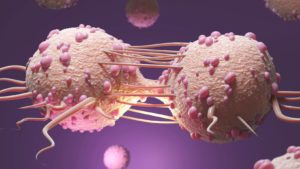
Tests carried out with mice show that the new strategy is six times more efficient at treating the most aggressive type of the disease in comparison to conventional therapy. Picture: Canva
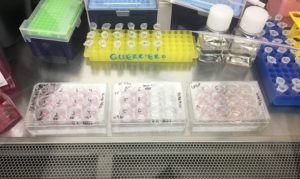
192 chemical compounds were evaluated at their capacity of weakening cancer cells. Picture: Vinicius Ferreira

Chemical printer tests molecules against tumor cells. Picture: Vinicius Ferreira
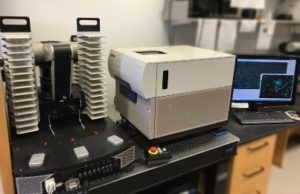
Device evaluates how weakened the cells are after the compounds action. Picture: HMS/Reproduction
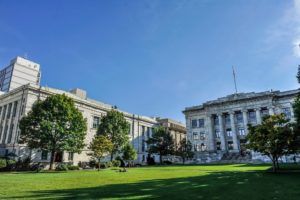
The study was conducted in partnership with scientists from Harvard Medical School. Picture: HMS/Reproduction
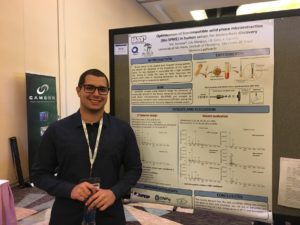
Ferreira had a one-year exchange program in the USA. Picture: Vinicius Ferreira
This article was written in Portuguese by Henrique Fontes, communication advisor at IQSC/USP and translated by Filipe Albessu Narciso, journalism intern at Aucani.
